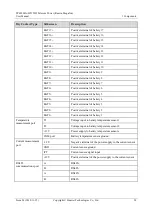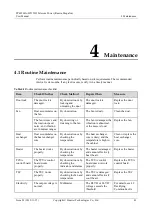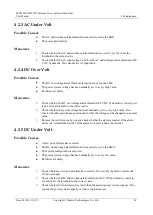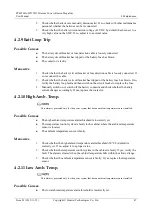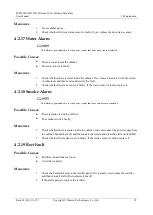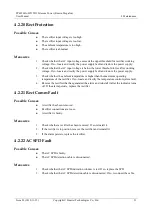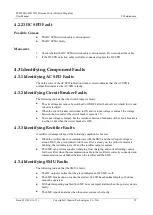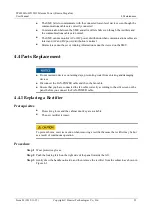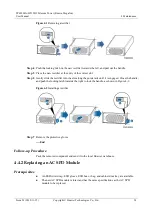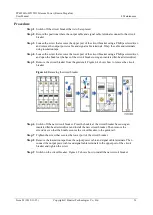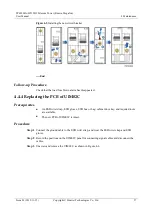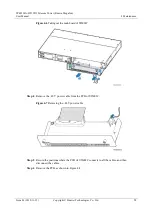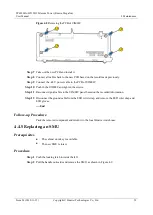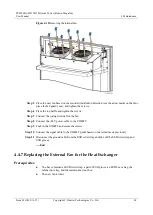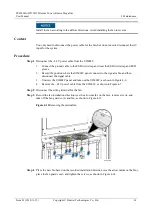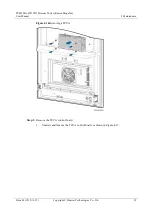
TP48200A-HT15D3 Telecom Power (Russia, Megafon)
User Manual
4 Maintenance
Issue 03 (2019-11-15)
Copyright © Huawei Technologies Co., Ltd.
52
4.2.23 DC SPD Fault
Possible Causes
The DC SPD detection cable is disconnected.
The DC SPD is faulty.
Measures
1.
Check whether the DC SPD detection cable is disconnected. If so, reconnect the cable.
2.
If the DC SPD detection cable is reliably connected, replace the DC SPD.
4.3 Identifying Component Faults
4.3.1 Identifying AC SPD Faults
Check the color of the AC SPD indication window. Green indicates that the AC SPD is
normal. Red indicates the AC SPD is faulty.
4.3.2 Identifying Circuit Breaker Faults
The following indicate that the circuit breaker is faulty:
The circuit breaker cannot be switched to ON/OFF after the short circuit fault for its end
circuit is rectified.
When the circuit breaker is switched to ON and its input voltage is normal, the voltage
between the two ends of the circuit breaker exceeds 1 V.
The input voltage is normal, but the resistance between both ends of the circuit breaker is
less than 1 kΩ when the circuit breaker is OFF.
4.3.3 Identifying Rectifier Faults
A rectifier is damaged if any of the following conditions is not met:
When the rectifier does not communicate with the SMU and the AC input voltage is
around 220 V, the green indicator on the rectifier is steady on, the yellow indicator is
blinking, the red indicator is off, and the rectifier output is normal.
The SMU can perform equalized charging, float charging, and current limiting control
for the rectifier when the communication cable to the rectifier is correctly connected and
communication is established between the rectifier and the SMU.
4.3.4 Identifying SMU Faults
The following indicate that the SMU is faulty:
The DC output is normal but the green indicator on the SMU is off.
The SMU breaks down or cannot be started. Its LCD has abnormal display or buttons
cannot be operated.
With alarm reporting enabled, the SMU does not report alarms when the power system is
faulty.
The SMU reports an alarm when the power system is not faulty.

